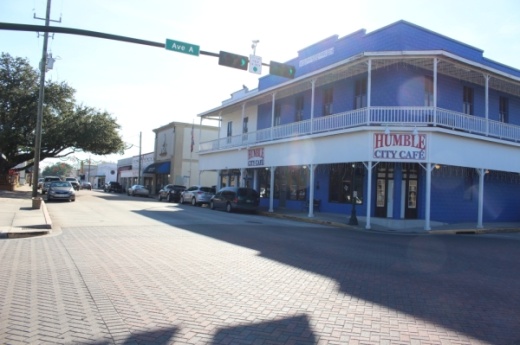The city invited three officials to share their experiences with downtown economic growth, including Shad Comeaux, the project manager at Freese and Nichols; Mike Baxter, the director of marketing and tourism with the city of Tomball; and Brett Banfield, the president of the Friends of Downtown Friendswood Association.
During the meeting, several Humble officials, business owners and residents stressed the importance of maintaining Humble's charm and history while also moving forward and growing the area.
Lee Kendrick, the owner of Lamp Monkey in Humble, said as a business owner, he wants Humble to become a destination. However, he said business owners should also focus on preserving the history of the area—much like Green Oaks Tavern, which used to be a jailhouse.
"So people want the preservation of all the old stuff, they just want it repurposed in in a way that they can use it now," Kendrick said. "Humble has such a history and a great story, but we're just not telling it."
The city of Tomball has been able to increase tourism while respecting the city's history, Baxter said. The city of Tomball has grown its tourism over the last roughly 10 years by bringing more festivals and events to the area, creating a mascot with historical significance and establishing a branding campaign, he said.
"We've increased awareness of Tomball regionally as a place to live and work; we've increased sales at our downtown businesses and brought new businesses to downtown," Baxter said. "The festivals and events are continuing to be just an incredible marketing tool for us to get people to come out and try us one time, and then they come back."
Another way to spur growth in downtown areas is to encourage the live, work and play environment by constructing housing that allows Millennials as well as retirees to walk and patron downtown businesses, Comeaux said. He suggested the city could also actively work to encourage more local businesses to open in downtown to retain the uniqueness of the area.
"A lot of communities are looking at their downtown areas where you have that walkable environment already created, and then you can start adding some elements, such as housing," Comeaux said. "The type of housing is very important, because it's not just, you know, single family homes, but they're looking for the density there. So if you can create that area within downtown where you have your density—the residential—[and] it's a walkable environment, then people are start to ... [and] businesses start to attract to that."
The three speakers cited various potential sources for funding downtown improvement projects, including creating a downtown association that functions as a nonprofit, creating a tax increment reinvestment zone for downtown, raising the city's sales tax or applying for grant funding.
For example, the Friends of Downtown Friendswood Association, which is a nonprofit, was able to invest in Friendswood's downtown by narrowly getting the majority voter approval on a sales tax increase election in 2016, Banfield said. While the sales tax election was followed by lawsuits from local residents who opposed the increase, Banfield said the funds have allowed the association to commission several murals that beautify Friendswood and host community events such as an ice cream social as well as music festivals.
After the meeting, Humble City Manager Jason Stuebe said while he does not believe Humble residents would support a sales tax increase, he said creating a TIRZ—which would collect dollars from a set zone to fund projects in the zone—is a future option for the city.
"I think TIRZ is on the table, quite frankly, and it's something that I think we seriously need to look at," Stuebe said. "I don't know that anybody would be absolutely opposed to that, but these are the types of conversations we need to have with the businesses and say, 'Would you support this?'"
Stuebe said the next step will be the city scheduling meetings with downtown business owners and residents to discuss what they would like downtown Humble to become. He said the city can then begin tackling “low-hanging fruits,” or projects and events that are fairly inexpensive and simple to organize.
“We're just going to start doing some of these low-hanging fruit stuff, you know, and just looking at some of these different options,” Stuebe said. “What we can afford now, we'll do, and what we need to budget for, we’ll budget for next year. ... I think everybody saw what the potential could be, and that there's a framework on how to do it.”





